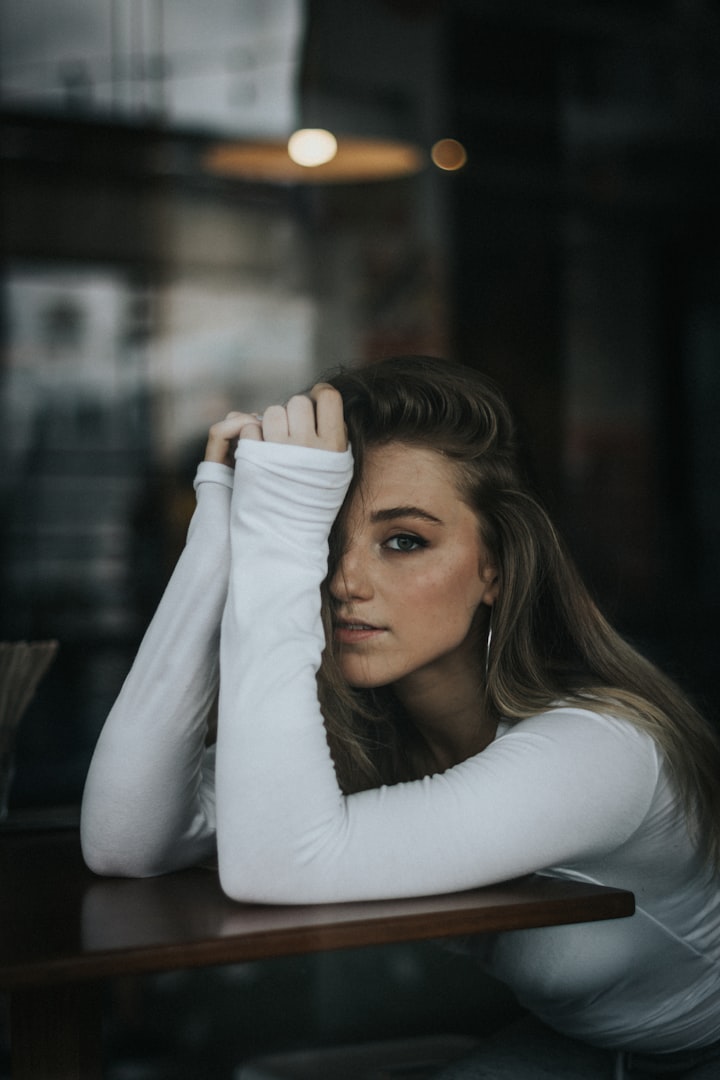Do you know why it's springtime for female consumer entrepreneurs?
What is the opposite of girl

"What's the opposite of a girl? Not boys."
"The opposite of girls are those who take mediocre aesthetics for granted."
On March 8, Women's Day, a creative ad for the up-and-coming lingerie brand Banana created a buzz. The line "We are responsible for the aesthetics of the world" points out the key keywords for women's consumption today. From sexuality to comfort, from Vimy to the now popular Banana Nei, Ubras and Inside Out, the changes in the lingerie category are a typical reflection that the aesthetic confidence and consumer confidence of the female population is returning.
Although the order of women>children>old people>dogs>men are always flirted with over and over again, it is undeniable that in this era where gender issues are going deeper and more multi-dimensional, women are indeed leading the change of social consumption structure in terms of aesthetics, perceptions and consumption levels.
It is important to note that there are 290 million women aged 25-40 in China, of which nearly 75% of household consumption decisions are in the hands of women, and the size of the women's consumption market will be approximately $4.5 trillion in 2020. According to the "Her Power" report just released by Tmall, 80% of the new brands at the head of Tmall today are focused on women's consumption.
Therefore, in this era of consumer entrepreneurship, capturing the pain points and needs of women has become the right thing to do.
However, many people do not understand the point, and the preferences of women seem to be as unpredictable as willows. Perhaps we could ask along the lines of Banana's creative advertising, "What is female consumption? And what is its antonym?"

A. The best era for female consumer brands, with segmented demand becoming the key entrepreneurial direction
From the demand side, due to the strengthening of comprehensive national power and the significant improvement of economic conditions in recent years, young women who are more independent and autonomous have shown a stronger willingness to consume compared to the previous generation, and their online spending power has also been increasing. According to Questmobile's just-released Her Economy Insights report, 59.2% of women have reached medium to high spending power.
In addition, Boston Consulting Group Managing Partner Ding Jiachuan pointed out that China's single economy is now very prominent in the world, which can give important support to women's consumption.
From the supply side, China's mature supply chain and underlying facilities such as e-commerce, logistics, and financial payments provide a healthy growing ground for female consumer brand start-ups.
The barriers to entrepreneurship are low, and entrepreneurship itself becomes purer. In the wild business days of the past, the imperfect infrastructure created a lot of trivial problems and obstacles, making it difficult for women to handle production, wholesale, marketing, retail, and logistics holistically. But nowadays, these are no longer big problems. With the help of e-commerce platforms such as Taobao and Tmall, female consumer entrepreneurs can focus more on building their products and brands.
According to a research report by Anxin Securities, "bold, beautiful, sporty, self-pleasing, nurturing and resourceful" have become the keywords for female consumers, who are more willing to experiment, more enthusiastic about trends and fashion; and more loyal to their preferences, not caring about the socially predetermined cognitive framework.
An interesting figure is that on Tmall, over 70% of AJ buyers are girls and 80% of suit buyers are women. In the past year, the number of women buying boxing gloves on Tmall has doubled. And 70% of the Tmall new brand susceptible population (consumers who buy new brands more than 12 times a year) are women.
One of the most obvious threads of female consumer brand start-ups we have seen over the past few years is a more precise exploration and satisfaction of category needs. Using the ultimate product and experience to hit the segment with a smaller granularity of interest. Let's pick three of the most typical segments.
One is the underwear mentioned above. In recent years, in addition to several women's lingerie companies that have done well in terms of comfort, we have also seen new brands such as Curious Mice, which are trying to redefine "sexy" with fashionable design elements that are more in tune with women's aesthetics. The traditional 'sexy' represented by Vimy is a term that has been standardized in the male discourse, but the 'male pleasing' setup has been criticized by an increasingly self-conscious female consumer.
The brand's design language has become "pleasing to the woman herself" and "sexy in the eyes of the woman". After entering Tmall in 2007, the brand's sales jumped from 5 million in the first year to 40 million in the second, and last year exceeded 100 million, a very rapid growth.
Secondly, it has become the new favorite wine for women today. The rise of this category is related to the economy of the single. In the last five years, the age of women marrying later and having children later has increased by five years, the employment rate of urban women is also increasing, and the fast-paced life brings many needs for socializingcolor and stress release, and drinking is one of these ways. Figures show that the rate of alcohol consumption among Chinese women has gradually grown from 10% to 30% now.
"A closer look at the women around you will reveal that the scene of having a small drink is increasing. Interestingly, this is similar to the social environment in Japan when low alcohol was on the rise decades ago. So we believe this trend will continue and hope to tap into some of the more niche demographics and needs." So says Vivian Tang, founder of fruit wine brand MissBerry.
Thirdly, color cosmetics and contacts are the most representative of women's "self-consciousness" needs. "The values of today's consumers are changing drastically. Beauty, skincare, skin management, color cosmetics, and contacts ......, a self-satisfaction and individuality-seeking face value economy, have become the mainstream consumer trends of today. Tmall's beauty channel has become a rich mine for the birth of new brands, and last year Hua Xizi's growth rate on it surpassed that of all international makeup brands.
Overall, many categories with more segmented needs, which were not met much before, are now coming forward based on insights, product innovation, platform support, and other means.
Secondly, with the new wave of consumer brands, why female entrepreneurs are later taking the lead?
The Boston Consulting Group report states that "China is one of the most active regions in the world for female entrepreneurship, far ahead of major developed countries such as the UK and US in terms of both numbers and share."
According to data from the Tmall She Power report, female entrepreneurs account for about 40% of new brands in industries such as beauty, personal care, and mother and baby, and over 50% in the apparel industry, with female entrepreneurship holding up half of the sky. At the same time, digital, sports, machinery, and other industries that seem to be full of testosterone are now the fastest-growing segments of Taobao female shopkeepers. Women are using e-commerce to break down social stereotypes and bridge the gender divide in business operations.
The team at Moody is 80 percent female, and founder Ci Ran says it is almost always the women who have a say in discussions. While Moody itself focuses on the emotional experience, women's natural sensitivity and control of detail regarding the logic and comfort behind the product will help the brand to better hit the needs of the brand's audience, which is crucial in the early days when the product is taking off.
"There are big differences in the way women and men think and do things. For example, internet entrepreneurship requires a very aggressive approach, to burn money for market share, which is often very difficult for female entrepreneurs. But a woman's delicacy will allow her to have a better perception of products and brands, and be more gentle in management, which is an advantage in the consumer sector instead."
Also, on an audience level, women place more importance on emotional and value attributes than men's enthusiasm for functional attributes. Young millennial women, in particular, tend to actively seek unique shopping experiences and consumer experiences. Research by Matrix Partners shows that 72% of millennial women believe that spending their money on these experiences and experiences is what makes them happiest.
Therefore, brands need to have the necessary strategies and technologies to support this personalized experience and emotional communication. For example, using brand storytelling, visual packaging, and social media communications to cut through, which women are also often better at.
Undoubtedly, the strong entry of more female entrepreneurs is bringing consumer goods and entrepreneurship back to the essence of the consumer and greater respect for human creativity and value.
The CEO of Growth Hackers, Zhang Xilun, once said that consumer entrepreneurs are like the title of a book, "Hackers and Painters". "Hackers" represent people who respect data and automation, are objective, and rational, and are good at setting goals and dismantling paths. But there is always something that cannot be measured, which requires the inspiration, intuition, and aesthetics of a "painter". For women's consumer brands, many women entrepreneurs have left such 'nods' in the early stages of brand building.
At this point, Chinese women's consumer branding is in the midst of an explosion, and Chinese brands still enjoy a relative dividend compared to their foreign counterparts. Having gone through the stages of the replacement of big brands - the growing maturity of the Chinese supply chain - the increased focus on self - the establishment of consumer culture and habits, female entrepreneurs and women's consumer brands are very much at the forefront of the market. They are fortunate to be able to grow with the younger generation of Chinese women consumers.
Of course, women's consumption belongs to women, but it is not only for women.
Whether it is entrepreneurs, consumers or pe, or personalized brands, we can see that the rise of female consumption is essentially a pursuit of human self-will, free spirit, and an esthetic level, a warm embrace of humanism in this modern, high-intensity, fast-paced urban context after a certain stage of social and economic development.
Likewise, it is also the bravery to break social stereotypes, a self-lo to be honest, and a spirit of resistance to confront stereotypes and refuse to be symbolic. We also believe that based on the new generation of female entrepreneurs and female consumer brands, they will this a new wave of consumption.
About the Creator
Clemmens Crofton
An eye for an eye thought for an obsession.






Comments
There are no comments for this story
Be the first to respond and start the conversation.